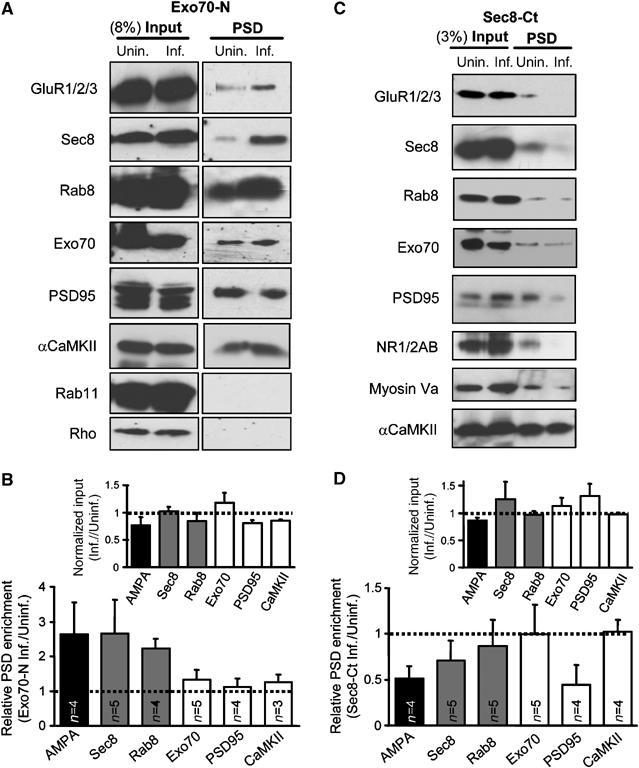Figure 7.

Opposite effects of Exo70 and Sec8 dominant negatives in the association of AMPA receptors with the postsynaptic density. (A) Total proteins in synaptosomes (8% of the total fraction) and PSD-associated proteins were analyzed by immunoblotting using the indicated antibodies (AMPARs were detected with a mix of GluR1 and GluR2/3 antibodies). The CA1 area was dissected from 30 to 45 control (unin.) hippocampal slices or slices infected with Exo70-N (inf.). Therefore, an ‘n' of 1 in this experiment represents the average of 30–45 slices. Protein extracts were processed to isolate the synaptosomal and PSD fractions (see Supplementary data). (B) Quantification of multiple independent experiments as the one shown in (A). Relative PSD enrichment was calculated as the intensity of the PSD band in the infected extracts over that of the uninfected ones, after normalization by their relative band intensities at the homogenates (input). Inset shows that infection did not produce a systematic effect on protein abundance at the inputs. (C) Similar to (A), comparing uninfected and infected slices expressing Sec8-Ct (same construct as in Figure 1). Total proteins in synaptosomes (3% of the total fraction) and PSD-associated proteins were analyzed by immunoblotting using the indicated antibodies. NMDARs were detected with a combination of NR1 and NR2A/B antibodies. (D). Quantification of PSD enrichment for the different proteins in the presence or absence of Sec8-Ct was calculated as described for (B).
